Key takeaways:
- Genre blending enhances storytelling by combining elements of different genres, fostering emotional connections and provoking thought.
- Films like “Get Out,” “The Shape of Water,” and “Zombieland” exemplify how genre blending can address complex themes while engaging audiences on multiple levels.
- The blending of genres allows for unpredictable narratives that spark conversations, reflecting personal experiences and societal issues.
- Engagement with genre-blending films can promote personal growth by challenging beliefs and encouraging deeper reflections on emotions and relationships.

Understanding genre blending
Genre blending is an exciting concept that allows filmmakers to mix traditional elements of different genres to create something fresh and engaging. I remember watching a film that combined horror and comedy, which surprised me with its ability to make me laugh while also keeping me on the edge of my seat. How often do we encounter stories that challenge our expectations and evoke a deeper connection by straddling the lines between genres?
When I think about genre blending, I often reflect on my own preferences as a viewer. I find that films that combine drama with science fiction often resonate with me on a personal level, inviting me to ponder societal issues while immersing me in imaginative worlds. It’s fascinating to consider how these hybrids can foster a more emotional experience and provoke thought. Have you ever watched a movie that made you feel torn between genres, leaving you with lingering questions long after the credits rolled?
Ultimately, understanding genre blending means appreciating how it can redefine storytelling. The innovative mix of genres not only captivates diverse audiences but also allows filmmakers to explore complex themes in new ways. Personally, I’ve always been intrigued by how some movies manage to simultaneously capture the essence of adventure while delving into deep emotional narratives, capturing both excitement and introspection. Isn’t it remarkable how genre blending can enhance our viewing experiences?

Importance of genre blending
The significance of genre blending lies in its ability to create captivating storytelling that resonates on multiple levels. For example, I still recall a film that intertwined elements of romance and thriller, leaving me breathless with anticipation while also rooting for the characters’ love to prevail. It’s as if genre blending serves to heighten our emotional investment, doesn’t it?
What truly fascinates me about blending genres is how it invites filmmakers to push boundaries. I remember watching a documentary that incorporated a touch of magical realism, which not only informed me but also struck a chord in my heart. By mixing genres, filmmakers can address serious subjects while maintaining a sense of wonder, which can lead to a more profound engagement with the audience.
Moreover, genre blending keeps the experience fresh and innovative, captivating viewers like me who crave novelty. Films that defy categorization often become talking points, sparking conversations about their unique narratives. Have you ever found yourself discussing a movie that defied traditional labels? That’s the magic of genre blending—it encourages dialogue and reflection, making us consider our own perspectives on the stories we consume.
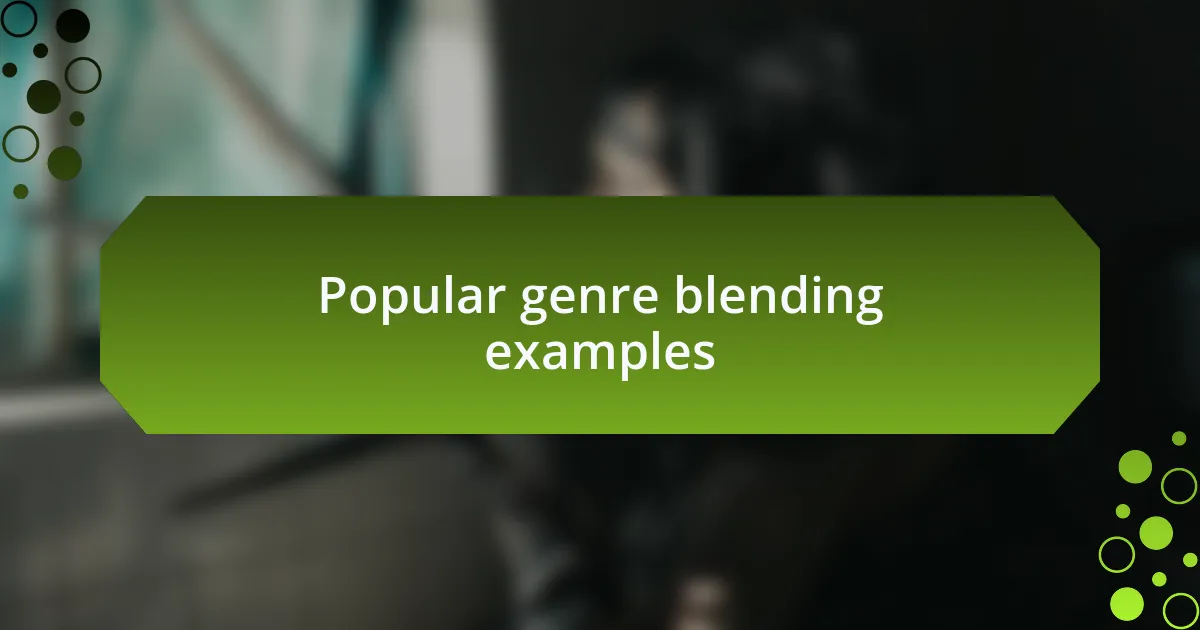
Popular genre blending examples
When I think of popular genre blending, the film “Get Out” immediately comes to mind. It’s a brilliant mix of horror and social commentary that had me gripping the edge of my seat while also forcing me to reflect on deeper societal issues. The way it intertwines fear with real-world anxieties is something that sticks with me, and it made me wonder—can horror be a vehicle for change?
Another standout example is “The Shape of Water,” which marries fantasy with romance in such an exquisite manner. Watching it felt like stepping into a dream where love transcends barriers, both literal and metaphorical. This blend isn’t just refreshing; it also leaves a lingering impression that questions what love truly means, prompting me to think about the connections we sometimes overlook in our own lives.
Then there’s “Zombieland,” where comedy meets horror in a way that brings laughter amid impending doom. It’s fascinating to witness characters facing the apocalypse while cracking jokes, reminding us how humor can be a coping mechanism in dire situations. Have you ever laughed during a scary moment? That unique fusion made me realize how versatile storytelling can be, serving multiple emotions and making even the most intense situations relatable.
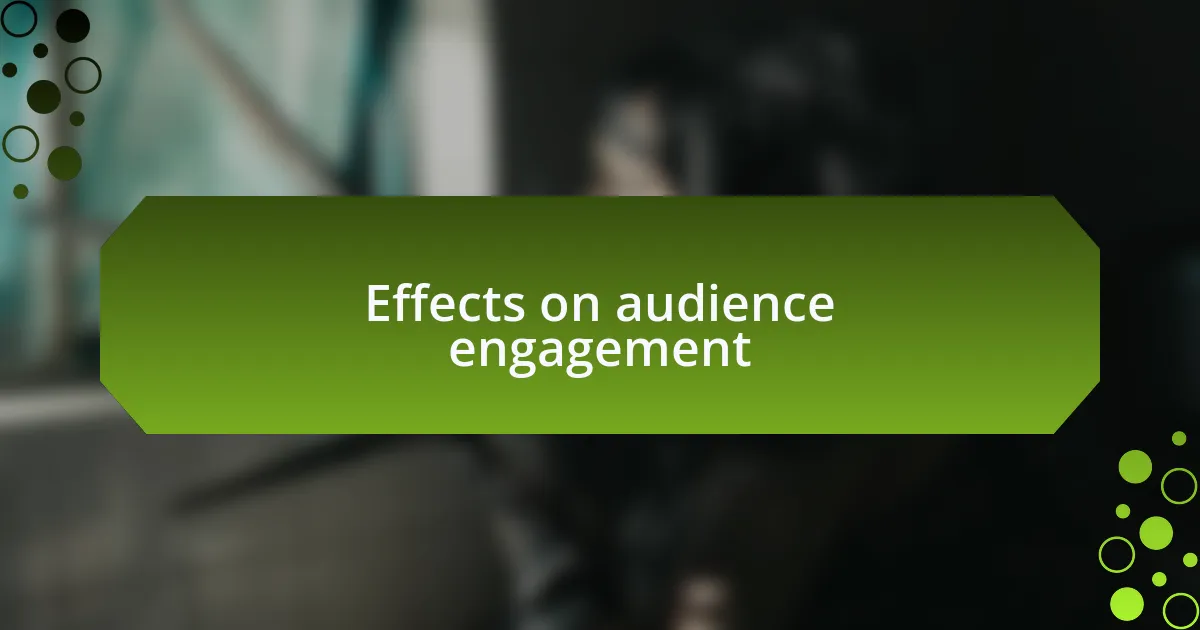
Effects on audience engagement
When I watch a genre-blending film, I often feel a deeper connection to the characters. For instance, with “Get Out,” I wasn’t just entertained; I was challenged to think critically about real-life issues that resonate with my own experiences. This level of engagement is what makes genre blending so powerful—it invites us to not only invest in the story but also reflect on our personal beliefs and biases.
In my experience, the unpredictability of a blended genre can heighten audience engagement. Take “Zombieland,” for example; I remember bursts of laughter coming from different sections of the theater during the most tense moments. That laughter created a shared experience, making the movie feel like a communal event rather than just a solitary viewing. It’s as if humor in horror breaks down barriers and draws us together, something that traditional genres often miss.
Moreover, genre blending leaves us with lingering thoughts long after the credits roll. Films like “The Shape of Water” not only captivate us through their unique storytelling but also make us question our understanding of love and acceptance. It’s this aftertaste—where I find myself discussing and thinking about the film days later—that makes genre-blending films truly impactful. Have you ever found yourself still pondering a movie’s themes a week after watching it? That’s the mark of effective engagement, and it’s a thrill when it happens.
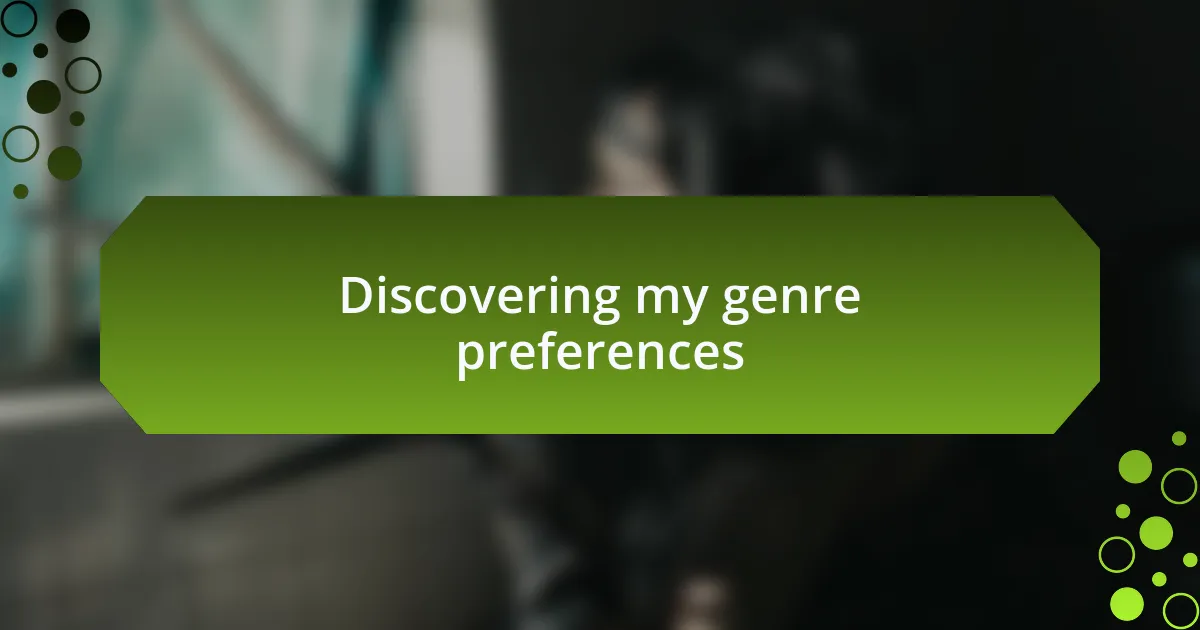
Discovering my genre preferences
Finding my genre preferences has been quite a journey, often leading me down unexpected paths. I’ll never forget the thrill I felt when I stumbled upon a film that seamlessly blended science fiction with romance, like “Her.” Initially, I leaned towards straightforward dramas, but this genre mix opened my eyes to emotional complexities I hadn’t considered before. Have you ever watched a film that shifted your understanding of what you liked?
Over time, I realized that experimenting with different genres allowed me to uncover hidden interests. I remember watching “Eternal Sunshine of the Spotless Mind,” a film that intertwines elements of fantasy within a romantic narrative. It challenged my idea of love and loss in a way I didn’t expect, urging me to reflect on my own relationships. There’s something magical about discovering films that speak to your hidden desires and questions, isn’t there?
As I explored various genres, I became more receptive to the emotions they portrayed. Comedy blended with drama has particularly resonated with me, as seen in “Little Miss Sunshine.” This film was a delightful reminder that life’s imperfections can be both painful and beautiful. In moments like this, I realized that genre blending doesn’t just redefine my preferences; it also shapes my emotional landscape, reflecting the complexities of real life.
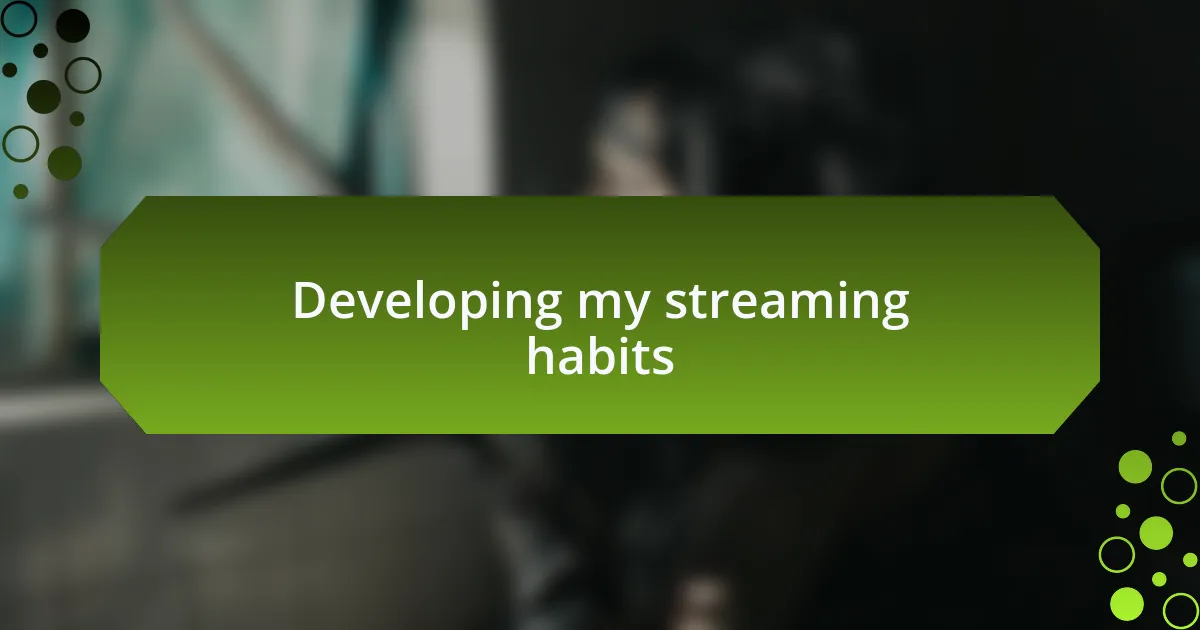
Developing my streaming habits
As I began developing my streaming habits, I discovered that the kind of films I gravitated towards helped me define my viewing practices. I still vividly remember the day I decided to binge-watch a series known for its genre-bending style. That experience taught me to appreciate longer narratives, allowing me to dive deeper into character development than a typical movie would offer. Have you ever found a series that hooked you so completely that hours slipped away without you knowing?
Gradually, I noticed patterns in my viewing choices; I began to gravitate toward content that not only entertained but resonated with my personal journey. Watching “The Umbrella Academy,” which skillfully combines superhero action with dark comedy, made me reflect on my own family’s quirks and dynamics. That blend of genres provided me with both laughter and introspection, prompting me to consider how my own experiences shaped my understanding of family.
This evolution of my streaming habits led me to create a curated watchlist that intentionally mixes genres. For instance, pairing a lighthearted rom-com with a gritty thriller for a balanced emotional experience has become my go-to strategy. How do you manage your watchlist to keep it fresh? I find that diversification not only satisfies varied tastes but also keeps my streaming sessions exciting, capturing the many facets of life and storytelling.
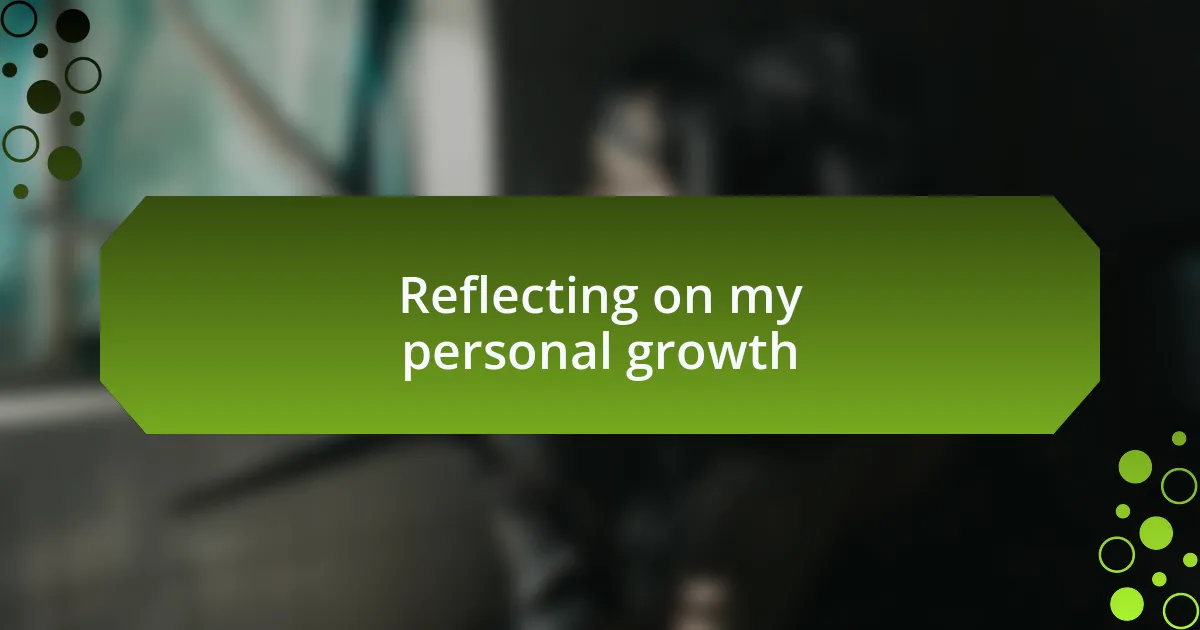
Reflecting on my personal growth
As I reflect on my personal growth, I realize that genre-blending films have been pivotal in shaping my perspectives. I remember one night when I stumbled upon a documentary that transitioned seamlessly into a suspenseful narrative. The unexpected shift forced me to confront complex emotions I had been avoiding, showing me how powerful storytelling can evoke change within myself. Have you ever encountered a film that pushed you to rethink your beliefs?
This transformative experience led me to embrace discomfort as a catalyst for growth. Watching films that challenge my viewpoints, like a romantic drama that dives into societal issues, sparked deep conversations with friends. I found myself sharing insights and learning from others, which not only broadened my understanding but also helped me cultivate empathy—a skill I value deeply. How do your viewing choices inspire conversations in your life?
Ultimately, I recognize that my journey through genre-blending has not just expanded my tastes; it has deeply enriched my emotional landscape. Each film and series have added layers to who I am, encouraging me to explore my vulnerabilities and strengths. I often ponder how much of my current self has been influenced by the diverse stories I’ve embraced. What stories have shaped your life, and in what ways have they left their mark?